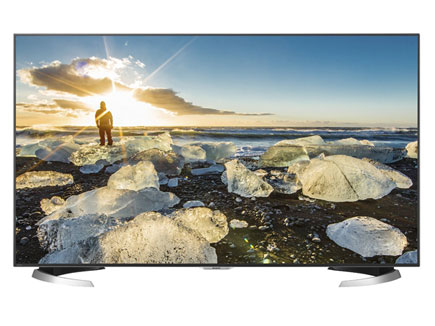Tom's Guide Verdict
This Sharp Aquos set presents a praiseworthy Ultra HD picture at a reasonable price, but it could use a few ergonomic improvements.
Pros
- +
Moderately priced 4K
- +
Detailed picture
- +
Solid upscaling of HD content
- +
Content search covers streaming and cable-TV options
Cons
- -
Weak off-angle viewing
- -
Cool (bluish) picture in preset modes
- -
Somewhat faded blacks
Why you can trust Tom's Guide
Sharp is the Rodney Dangerfield of big screen TVs: It just can't get no respect. Often forgotten behind dominant brand names like Sony and Samsung, Sharp is much more than an also-ran. For example, its Aquos LC-60UD27U 60-inch 4K set ($1,800) deserves more than passing admiration, delivering reasonable performance for the price.
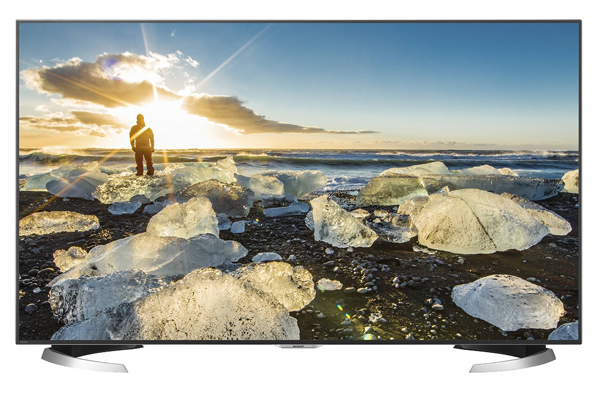
The LCD-based Aquos uses an edge-lit LED design to illuminate the picture and includes a THX Cinema Mode, which means the TV has passed THX certification tests for color fidelity and other aspects of picture performance, comprising several hundred tests to achieve certification. The viewing angles and black levels could be better, but overall this Aquos is worth the investment.
MORE: Best TVs You Can Buy Now
Design: Claw-Footed
Cosmetically, the Aquos UD27U presents a pleasing facade. It is less than 3 inches thick and has a narrow 0.4-inch, aluminum-trimmed bezel around the picture. The only features that mar its appearance are the supplied feet for tabletop placement, which look like inverted bird claws.
The back of the TV features basic control buttons — an emergency solution if you misplace the remote. Features built into the set include Wi-Fi (802.11 a/b/g/n) and a full complement of connections, including three USB ports, an Ethernet plug, component/composite video inputs, a coaxial input, an SD Card slot, an optical audio output and four HDMI ports.
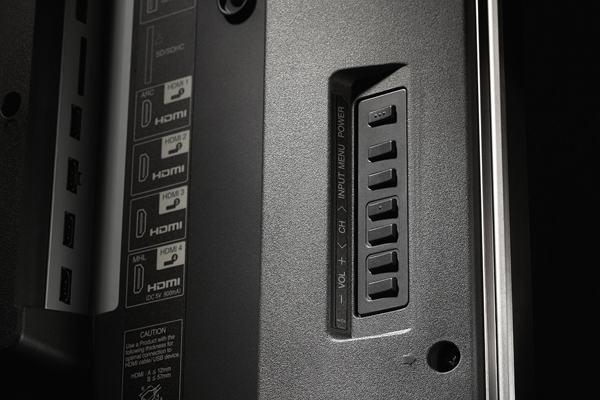
Unfortunately, as with some other 4K sets we've tested, not all of the Sharp's HDMI ports are compatible with the latest 4K copy-protection scheme, known as HDCP 2.2 (High-bandwidth Digital Content Protection). In this case, only one HDMI port supports the standard, and is not labeled as such. We believe all HDMI ports should support HDCP 2.2 in order to avoid future compatibility problems when you are using more than one 4K source.
One feature the Aquos UD27U has that we wish every big screen included is a wallpaper mode. Put your favorite images on an SD Card and have the Aquos UD27U display them in rotation so that you're not stuck with a big black screen in your living room when you're not watching TV.
Interface: Split Personality
Like most sets of this size, the Aquos UD27U has smart TV features. Called SmartCentral, Sharp's smart TV software provides the main menu for live TV, streaming services and apps. It's a confusing demarcation these days, since many apps are for streaming services.
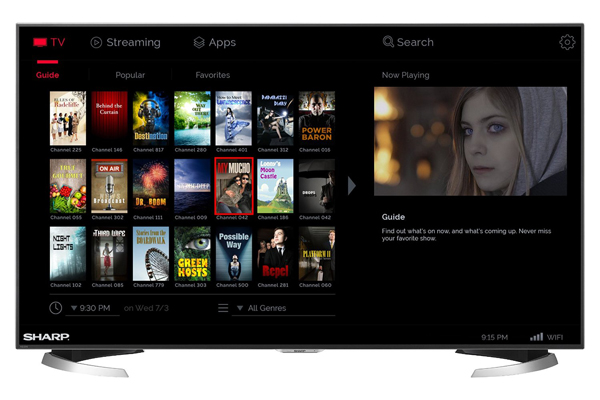
You'll find support for the most popular services here, including Netflix, Pandora, Hulu Plus and Vudu. However, there's not much more. Sony, Samsung and other TV makers have far more online entertainment offerings, such as Amazon. Furthermore, the TV's settings and option menus (for changing picture mode, for example) use a different interface from SmartCentral with a lower-resolution look. Compared with the unified TV interfaces such as LG's webOS, Sharp's TV has a split personality of older and newer design elements.
MORE: Samsung HU8550F 65-Inch TV Review: Big 4K Picture
One notable, and rare, feature that the Aquos UD27U offers is the ability to search for a show or genre like The Big Bang Theory across all of your streaming and broadcast services at once. It worked fine in our brief time with the set.
Remote: Adequate But Frustrating
A familiar wand-style remote comes with the Aquos LC-60UD27U, but it could have been more thoughtfully designed. For example, while there's a prominent dedicated Netflix button, the SmartCentral button is tiny and hidden to the top right of the four-way directional pad. In the dark, it's nearly impossible to find, as most buttons are not backlit.

The other confusing aspect of Aquos UD27U remote's design is its inconsistent access to settings. Some functions can be found in on-screen menus but others can only be accessed using buttons on the remote. The TV's input settings are accessed via buttons, for example, rather than being available under the on-screen settings menus, which would be less confusing.
Image Quality: Getting Some Respect
Overall, the Aquos LC-60UD27U presents a cooler — skewed toward blue — picture. It also does not deliver deep, solid blacks, like the (considerably more expensive) Sony X950B (see review), but it does an excellent job revealing details in shadowy corners.
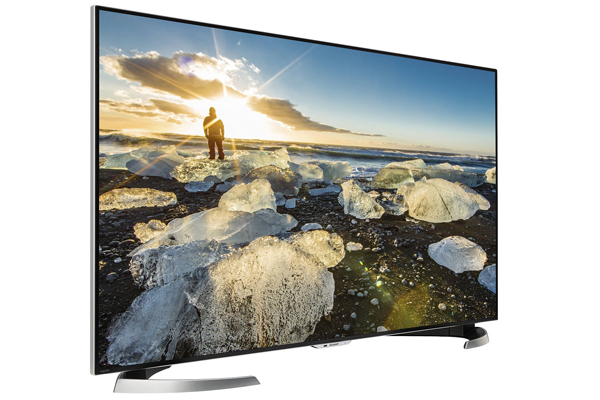
Both the Movie and THX Movie modes yielded identical color performance and were the most color-accurate of the Aquos LC-60UD27U's preset mode. It's not as bright as what some viewers prefer, but I found it more comfortable for extended viewing (couch potatoes take note). So one could leave the settings there and relax.
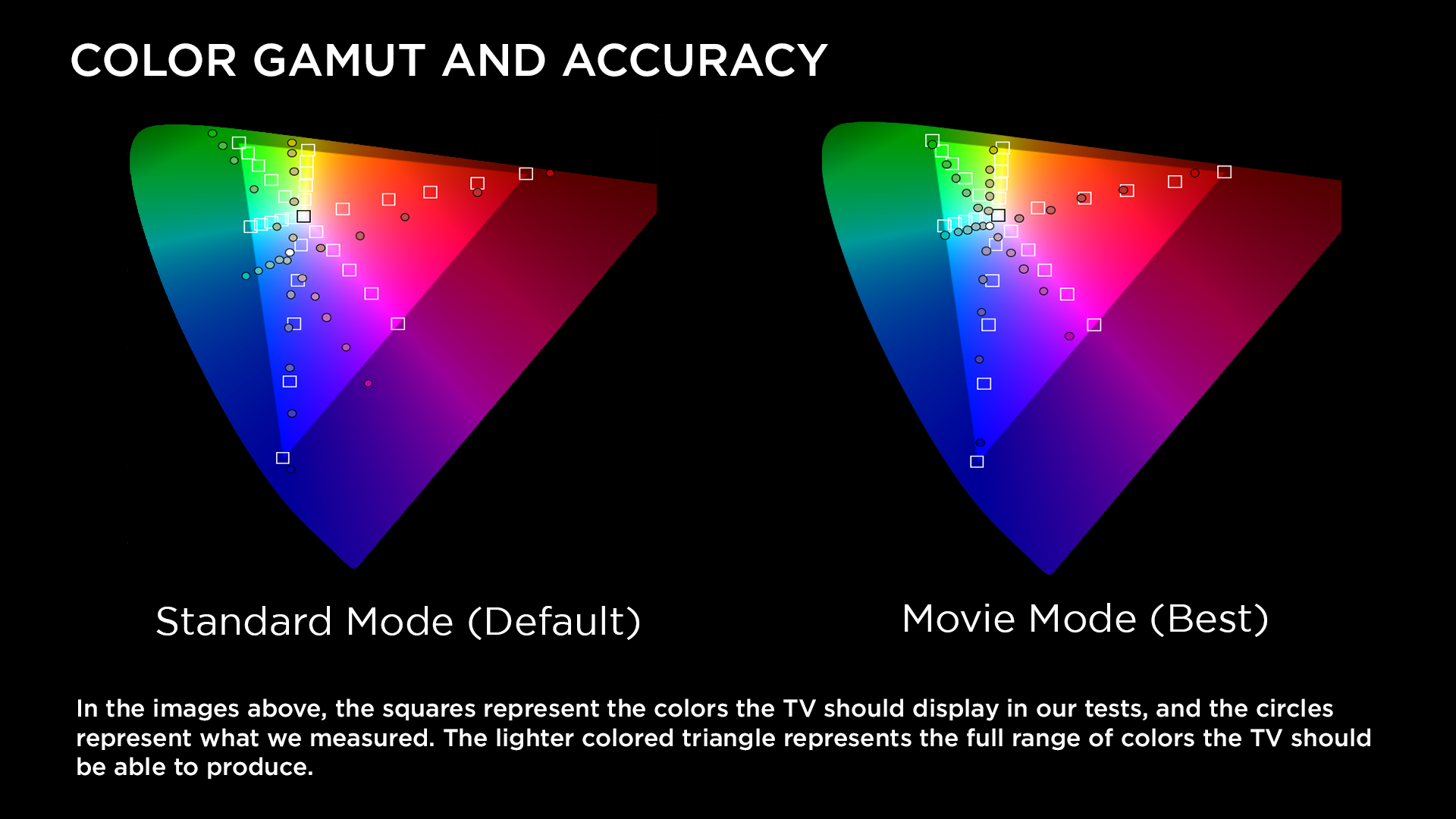
However, to get the best results in our test measurements, we tweaked the color adjustments in Movie mode (there are also preset for Standard, Game and PC use), which reduced the predominance of blue but slightly reduced contrast in the process. When using our best, calibrated adjustments, the set reproduced 99.91 percent of the color gamut for HD and 4K content, known as Rec. 709. This is essentially perfect; many top-tier sets score only in the high 80s.

Upscaling is one of the most important tasks facing 4K sets, as they have to work with the prevalent 1080p HD (and lower) programming. The Aquos LC-60UD27U did a respectable job in this regard. It delivered a pleasant level of brightness and color balance. However, with all the video processing engaged in its default in Movie mode, we did witness some of the same distortions noted on other sets, such as the 1080p Panasonic TC-50AS530U.
In Skyfall chase scenes I watched from a Blu-ray disc, the video smoothing was so severe that the front wheel of the villain's motorcycle momentarily disappeared -- as did James Bond's head. There was also some additional blurriness in the car chase sequence outside Istanbul's Grand Bazaar as the Land Rover rushed past. All the motion-enhancements settings were engaged by default. Digging into more advanced settings, I switched Film Mode to Standard. Bond's head then reappeared, and the distortions and dropouts (like the missing wheel) were eliminated.
MORE: Netflix Will Tell You What TVs Are Best for Streaming
With some slight adjustment, I liked the color palette the Sharp Aquos LC-60UD27U presented. In upscaled content, it was usually fairly balanced. Occasionally, a careful observer might notice that the green hues of forest trees may look somewhat artificial, but, in general, the set does a good job balancing accuracy and brightness without overdoing it. Watching 4K programs, the level of detail was impressive, such as being able to see the specks of dust on a computer screen in an episode of The Blacklist.
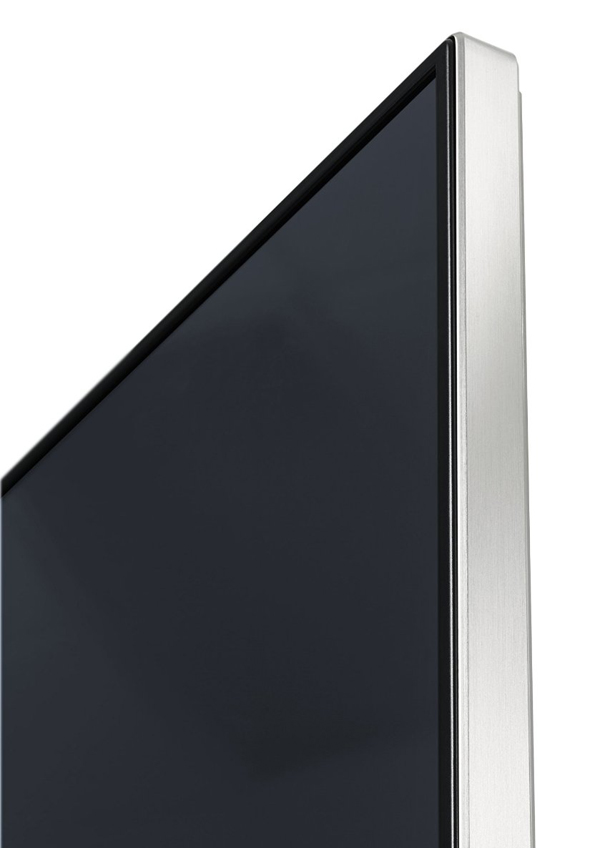
Contrast ratio numbers in our tests were about average for a set of this caliber. While the dark areas of the screen never appear completely black, the shadowy areas retained some level of detail. In a 4K video of a concert scene, I could make out the faces of audience members in the darkness, for example, but also noticed that the trade-off was a slight greenish cast around the cymbals on stage.
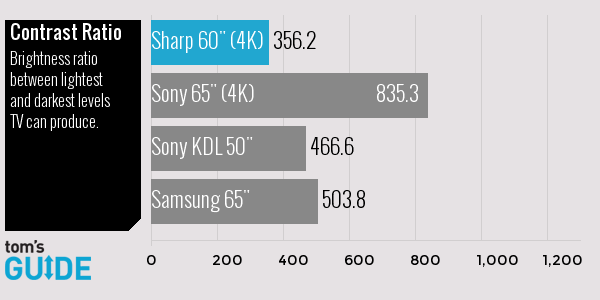
Based on my testing of the Aquos UD27U, off-axis viewing is less than ideal. Once you move away from centered viewing positions, colors tend to wash out more than on some other 4K sets, such as the Sony X950. I also noticed some flaring or light leakage in the lower corners of the screen during predominantly dark scenes, such as the concert footage and space scenes from Gravity.
Gamers may also note that large 4K sets are not known for their alacrity. The Sharp Aquos UD27U is no exception. Like others we've tested, such as the Sony X950B, the Sharp set exhibits significant image lag (292 milliseconds), which could be noticeable for serious gamers (a sub-100 ms result would be more acceptable).
Audio: Nothing to Sing About
At first blush, the Aquos LC-60UD27U sounds muffled, as if the audio were emanating from somewhere far behind the TV. Fortunately, the set has five different audio settings to tweak its sonic delivery. Those settings include presets designed to give the sound a big stadium feel or a concert hall sensation, as well as one for movie soundtracks.

These modes definitely make the sound more dynamic, giving it a wider, more spacious, sound stage. On the other hand, they can also make other elements sound intolerably harsh, such as the backing vocals in Adele's Skyfall theme song, which sounded screechy.
MORE: Best Sound Bars
One can make further adjustments to taste, selecting clear voice (for enhancing dialogue) and adjusting balance, bass and treble. In testing all the various adjustments, I somehow managed to ruin playback on the Blu-ray Skyfall disc so that only the rear channel music and sound effects could be heard; no dialogue was audible. Various resets did not work, although the audio on 4K recordings we tested was unaffected.
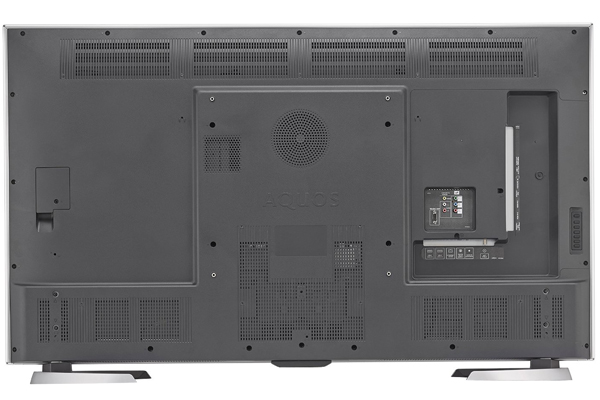
To fix the problem, a Sharp software update (version 123U1501281A) was required. Once installed, the issue disappeared. Whenever you buy a smart TV, you should connect it to the Internet in case there are software updates.
Bottom Line
Ultra HD, or 4K, sets are rapidly becoming the norm this year. Consequently, anyone upgrading their TV should consider a 4K set, as ever more Ultra HD content will be available in the future. The trick is not to break your budget in the process. The Sharp Aquos LC-60UD27U represents a good compromise. It delivers a more-than-capable 4K picture, does a good job upscaling current HD content, and won't exceed your credit card limit.
- PlayStation Vue Online TV Review: Smarter Than Cable
- The Best Online-Original TV Shows 2015
- Where to Find Great Movies & TV Shows Taken Off Netflix
John R. Quain has been reviewing and testing video and audio equipment for more than 20 years. He is currently a contributor to The New York Times and is the on-air technology contributor for the CBS News show Up to the Minute. Follow him @jqontech. Follow us @tomsguide, on Facebook and on Google+.
John R. Quain has been reviewing and testing video and audio equipment for more than 20 years. For Tom's Guide, he has reviewed televisions, HDTV antennas, electric bikes, electric cars, as well as other outdoor equipment. He is currently a contributor to The New York Times and the CBS News television program.
